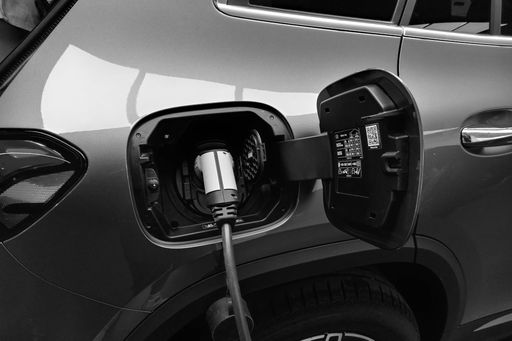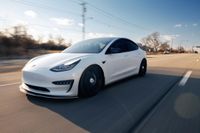Hybrids vs. Plug-In Hybrids: Pros and Cons
Learn how they work to better understand the differences and similarities between these two types of complex automobiles so you can decide which one is best for you.

How Hybrids and Plug-In Hybrids are Similar
Both powertrains have Hybrid in their official names, and that indicates they share a core engineering philosophy and operational motif—up to a point. They both use an internal-combustion engine and an electric motor for propulsion, with the electric motor going it alone when accelerating from rest and the gasoline engine joining as speed builds—mechanically, in parallel hybrids; by driving a generator, in series hybrids.
Both are equally dependent on regenerative braking (regen) to convert forward momentum into electricity when the driver wants to slow or arrest a vehicle's descent on a hill. This harvested energy is saved in a small battery that's little bigger than 1 kilowatt-hour (kWh), a sufficient size because that saved energy will be immediately reused the next time the driver accelerates. In stop-and-go city driving, opportunities to top up the battery via regen happen constantly, which is why both types have unusually high city MPG.
How Hybrids and Plug-In Hybrids Differ
In a hybrid, that small battery is all there is, and how it's kept full relates back to the burning of gasoline. In plug-in hybrids, that small battery still exists, but it's more of a theoretical reserve set aside within a much larger battery. How much larger is a PHEV's battery? On the order of 10 to 20 times the size of a hybrid's battery. The extra capacity allows for fully electric driving for some 20 to 50 miles, depending on battery size and the weight and configuration of the vehicle. You do have to plug in the vehicle to fill this larger battery, which is where the P in PHEV comes from. Crucially, the battery isn't truly empty when range goes to zero and the engine switches on. This is where the approximate 1 kWh reserve carve-out comes into play so gasoline hybrid operation supported by regenerative braking can continue, the H in PHEV.
Because of this, PHEVs stand in a middle ground between gasoline-fueled vehicles (including hybrids) and fully electric vehicles. They have two fuel flaps for two external fuel sources—electricity and gasoline. This is why it's easier to think of PHEVs as part-time electric vehicles. They can be a pure EV commuter and errand-runner on weekdays, but they retain unlimited road trip capability using gasoline-fueled hybrid power during weekend trips and on vacation.
To paraphrase a superhero franchise, with greater battery power comes greater design responsibility. A PHEV is expected to get propulsion from its electric motor across a wider speed range than a hybrid when its battery is sufficiently juiced up, so the PHEV upgrade is only feasible if the underlying hybrid system has a sufficiently powerful electric propulsion motor. Because such motors also act as generators, this also means PHEVs are more likely than hybrids to offer varying driver-adjustable levels of regenerative braking up to including one-pedal driving via regen triggered by lifting off the throttle.
Plugging In a PHEV
It's easier to deal with plugging in a PHEV than a full EV, mainly because their batteries are significantly smaller—on the order of one-fourth the size. As a result, the 110-volt "Level 1" charge cord that comes in the trunk may well deliver enough juice to top up the battery overnight (10 to 12 hours) using a standard garage outlet—especially if you can plug in every night at home. An electrical upgrade to support 240-volt "Level 2" home charging equipment may not be necessary at all.
You'll will still benefit from 240V charging away from home (and at home if you upgrade), but the Level 2 speed advantage is typically 3x faster than 110-volt Level 1 instead of 6x, because PHEVs generally have smaller (and less expensive) 3.3-kW onboard charge circuitry instead of the 6.6-kW (and larger) units that pure EVs are typically fitted with.
As for DC fast-charge capability, most PHEVs do not support it—the Mitsubishi Outlander is the only current exception—because their batteries aren't big enough to warrant the extra cost and complexity. Besides, DC fast charging is intended for pure EVs on road trips, but PHEVs have the gasoline half of the personality for that. You don't need to hassle with charging as you wander around the country, which is a big part of a PHEV's appeal. It's a feature, not a bug.


